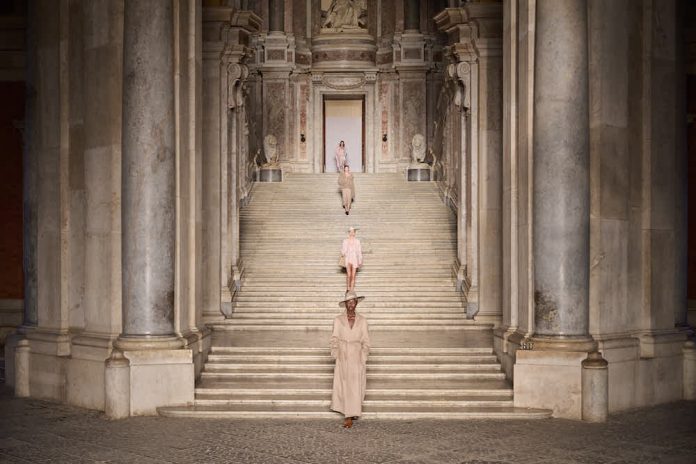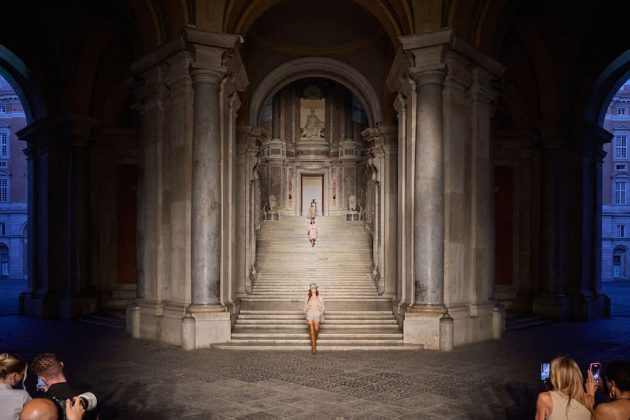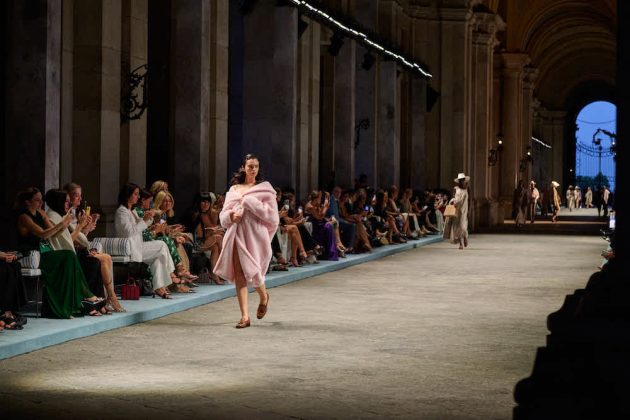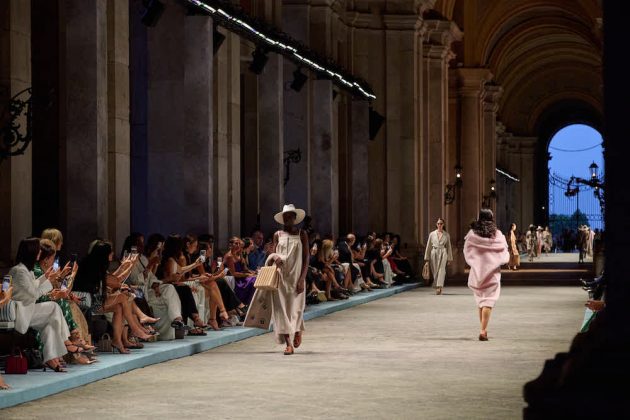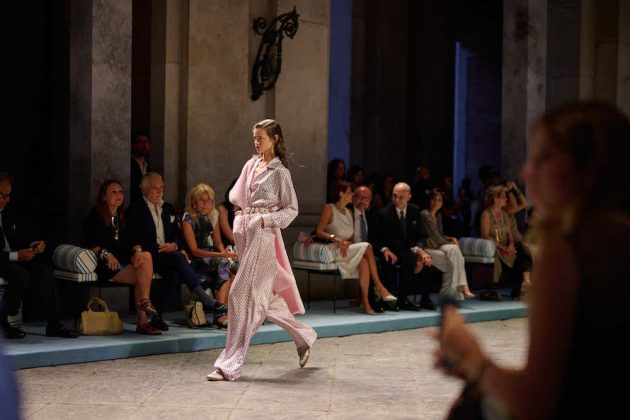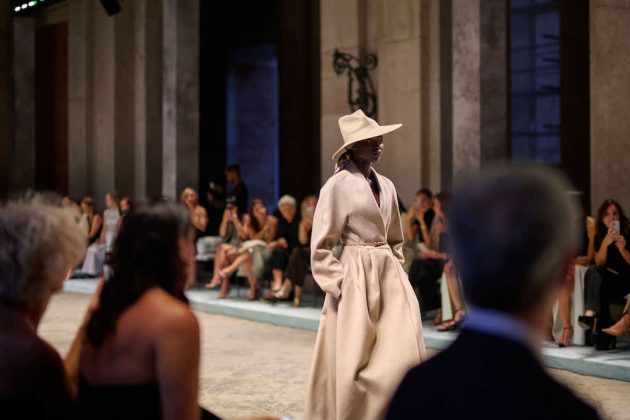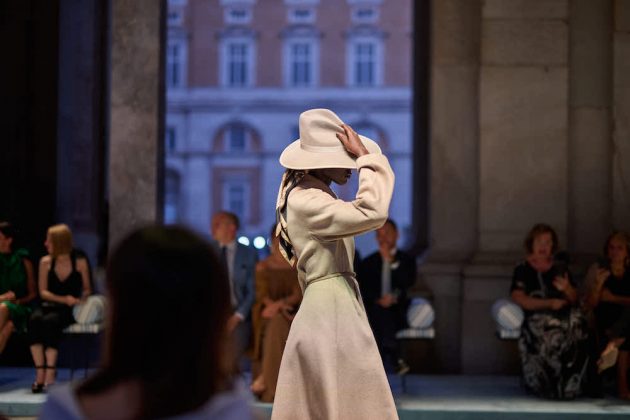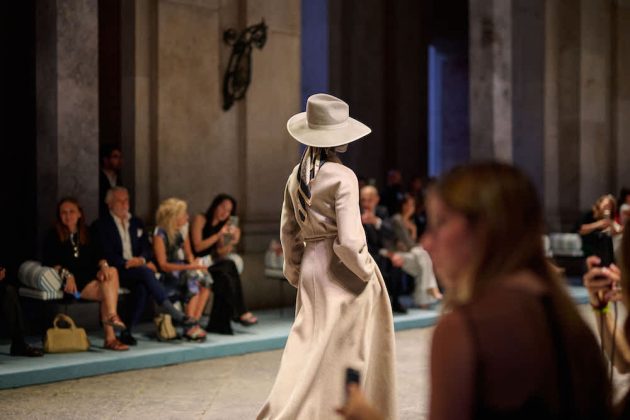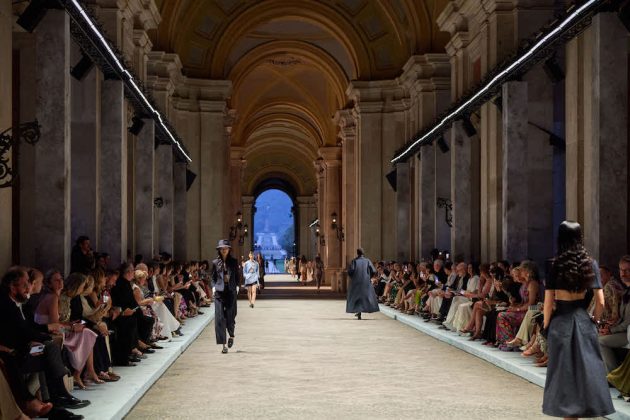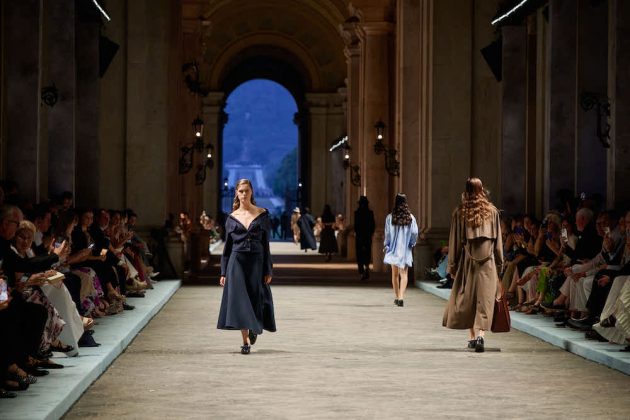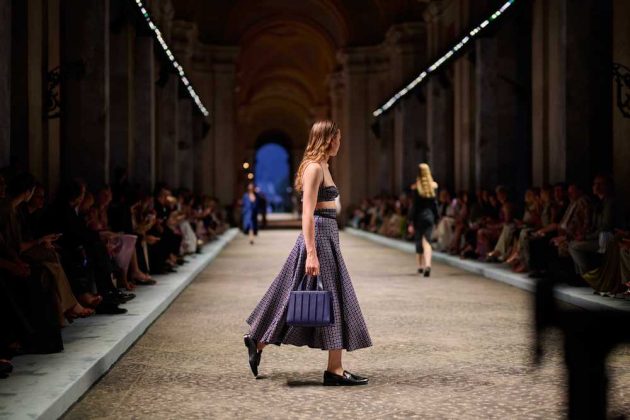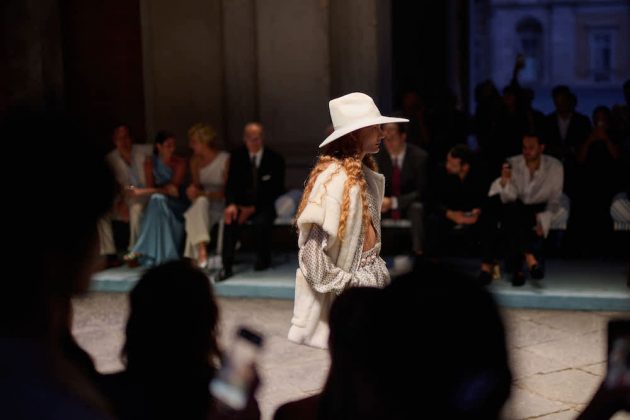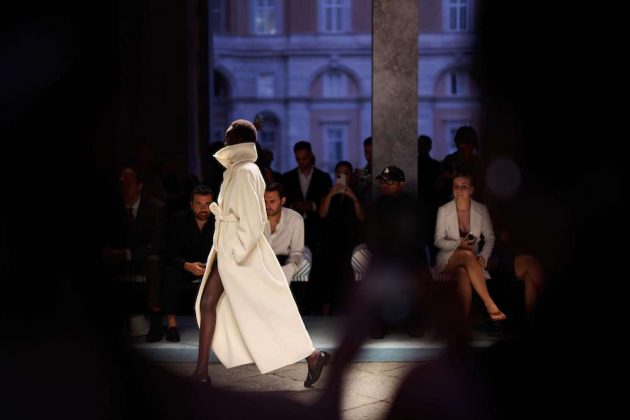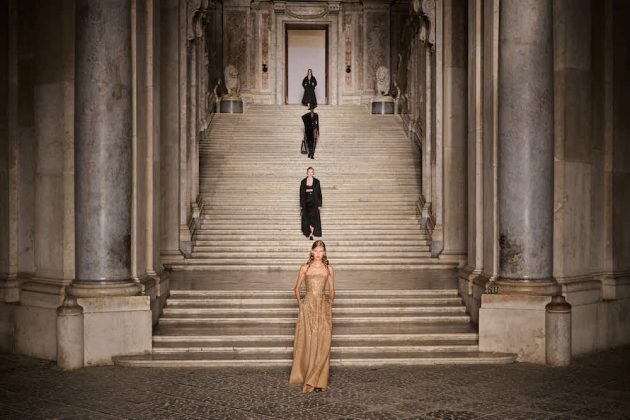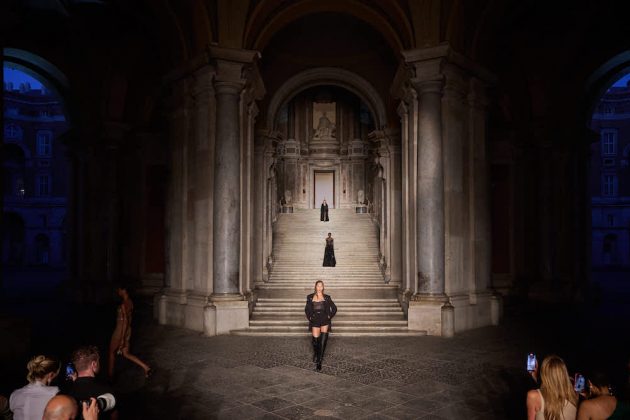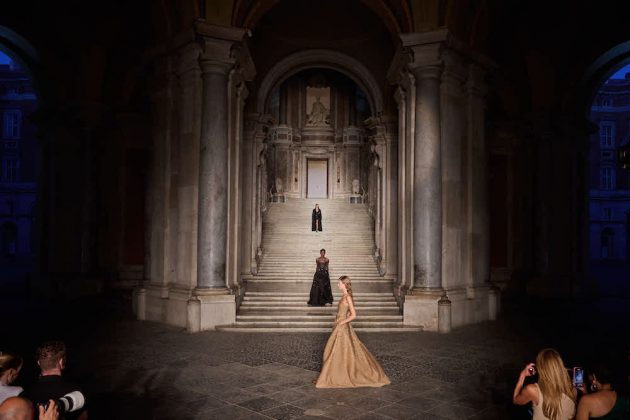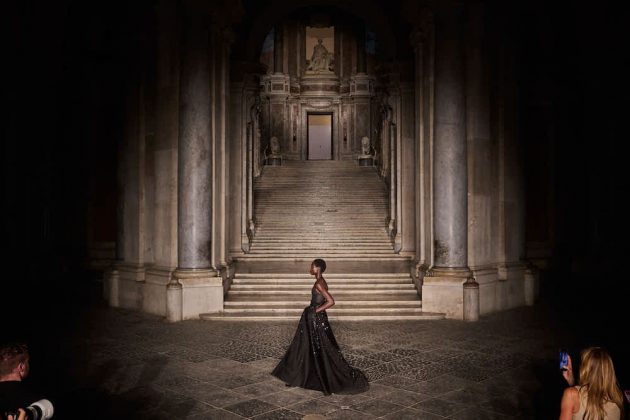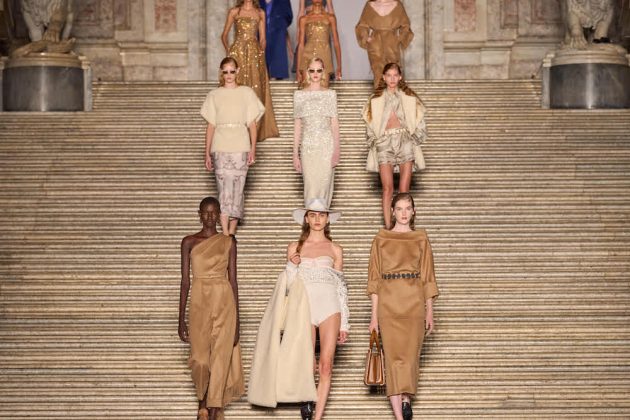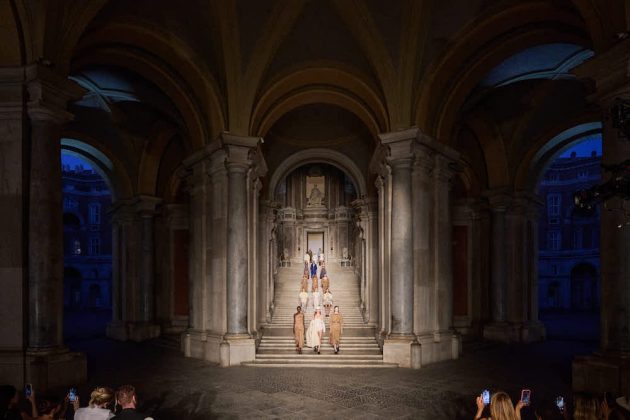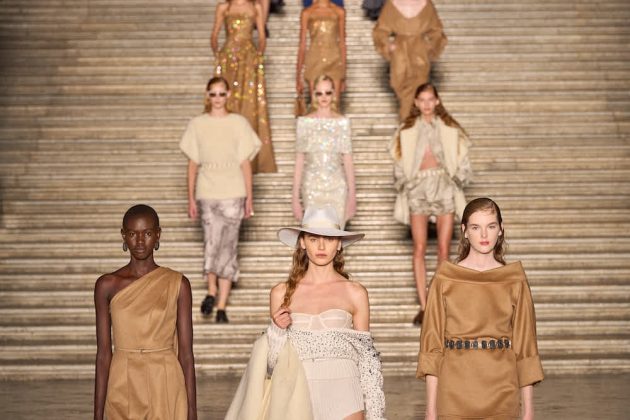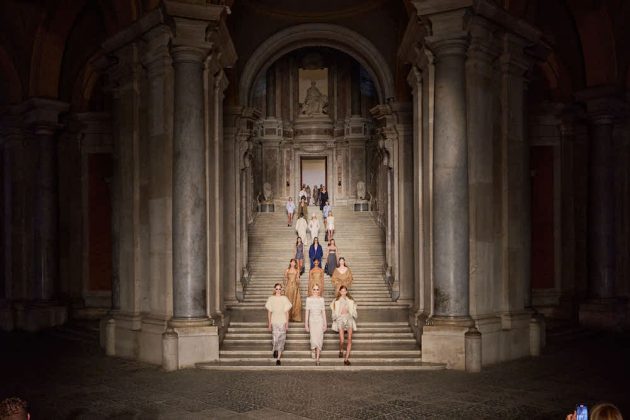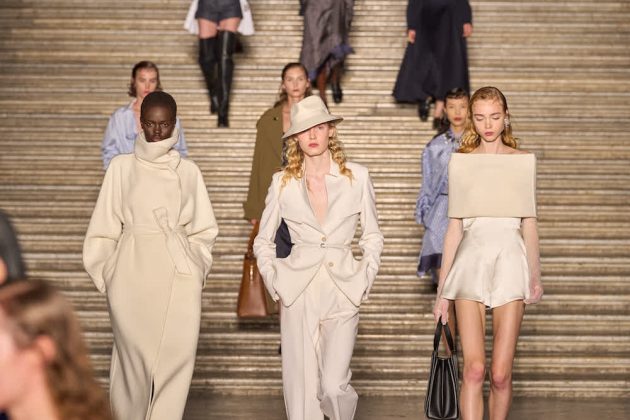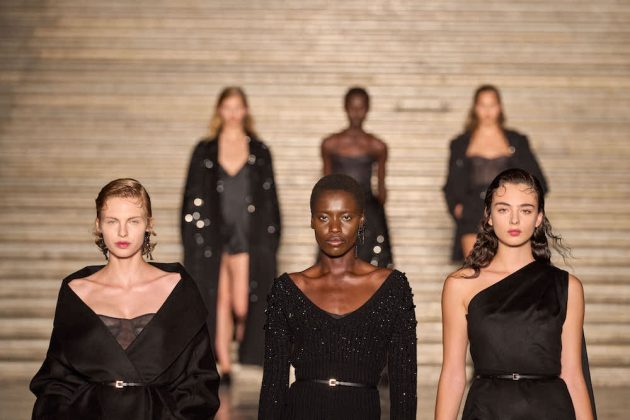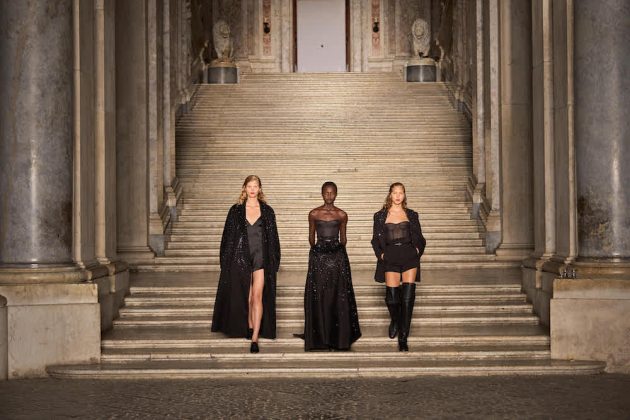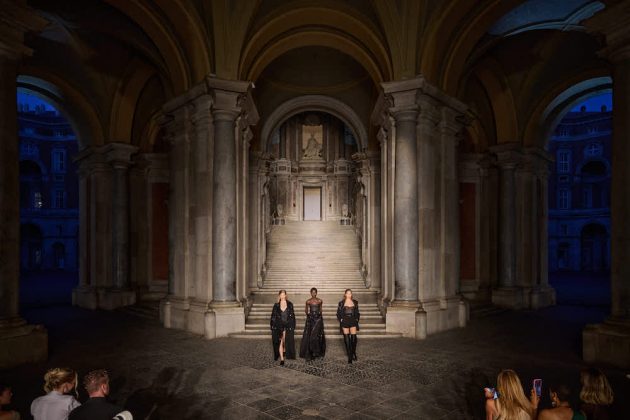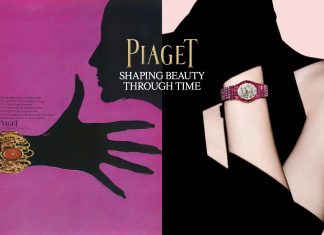ปี 1951 Max Mara เริ่มก่อตั้งขึ้น และเป็นปีเดียวกับที่ Ruth Orkin ได้ถ่ายภาพ ‘American Girl in Italy’ ในตอนนั้นการที่ผู้หญิงคนหนึ่งจะมั่นใจในตัวเอง เป็นอิสระ และเดินทางเพียงลำพังบนถนนหนทางของ เมืองฟลอเรนซ์โรม และ เนเปิลส์ หรือเมืองอื่น ๆ ในอิตาลี ถือเป็นภาพที่สะดุดตาและน่าจดจำ 75 ปีผ่านไป เธอได้ก้าวเดินมาไกล และ Max Mara ก็อยู่เคียงข้างเธอในทุกย่างก้าว
ปี 1951 เป็นช่วงกลางของการฟื้นฟูอันยิ่งใหญ่ของอิตาลีหลังสงคราม Achille Maramotti รู้ดีว่ากระแสกำลัง เปลี่ยนไปเมื่อเขากล่าวว่าเขาต้องการแต่งตัวให้กับ “ภรรยาของหมอและทนายในท้องถิ่น” เพราะเขาเชื่อว่า ผู้หญิงเหล่านี้คือกลุ่มที่จะเป็นผู้นำการเปลี่ยนแปลงระดับโลก ในกรุงโรม เหล่านักออกแบบเสื้อผ้าชั้นสูงต่าง แย่งชิงความสนใจจากบรรดาขุนนางและเจ้าหญิง ขณะที่ในเมืองเรจจิโอ เอมิเลีย Maramotti มุ่งมั่นกับการ สร้างสรรค์เสื้อผ้าที่ดูดี ใช้งานได้จริง และมีราคาที่จับต้องได้สำหรับกลุ่มชนชั้นใหม่ที่กำลังมั่งคั่งขึ้นเรื่อย ๆ
หญิงสาวผู้แสนเย้ายวนจากทางใต้ที่เต็มไปด้วยเสน่ห์ทางเพศ และแม่บ้านผู้ประหยัดมัธยัสถ์จากทางเหนือที่ ขยันขันแข็ง อาจดูเหมือนเป็นขั้วตรงข้ามกันโดยสิ้นเชิง แต่ทั้งสองกลุ่มต่างขับเคลื่อนด้วยอุดมคติเดียวกัน นั่น คือ ‘bella figura’ (ภาพลักษณ์ที่ดีงาม) ชาวอิตาเลียนที่ทำให้ทั้งโลกทึ่ง ซึ่งไม่ว่าจะทำอะไรก็ตาม พวกเขาทำ ได้ดีกว่า และดูดีกว่า อย่างการประชุมระดับโลกที่เปลี่ยนแปลงประวัติศาสตร์ หรือการเที่ยวพักผ่อนบน ชายหาดในงานปาร์ตี้ของวัยรุ่น พวกเขาทำสิ่งเหล่านั้นด้วยการผสมผสานระหว่างความสง่างามอย่างไร้ข้อจำกัด และเสน่ห์อันเร่าร้อนจนกลายเป็นสัญลักษณ์ของสไตล์อิตาเลียน
ภาพยนตร์อิตาเลียนเป็นตัวแพร่กระจายสไตล์นี้ออกไป ไม่ว่าจะเป็น ‘Napoli Milionaria’ ของ De Filippo, ‘L’Oro di Napoli’ ของ De Sica หรือ ‘Riso Amaro’ ของ De Santis — ล้วนถ่ายทอดพลังชีวิตอันไม่ย่อ ท้อของหญิงสาวอิตาเลียน Silvana Mangano และ Sophia Loren — นาโปลีในปี 1951 ชวนให้นึกถึงหญิง สาวที่เปี่ยมไปด้วยเสน่ห์ เย้ายวน ร้อนแรง เดินสะโพกพลิ้วไหวเคียงข้างเด็กหนุ่มขี้เล่นแต่งตัวเนี้ยบมีเสน่ห์ใน เนเปิลส์หรือที่เรียกกันว่า Scugnizzo ต่อมา E. Marinella แบรนด์เนกไทชื่อดังจากเนเปิลส์ที่เป็นสัญลักษณ์ แห่งความสง่างาม การร่วมมือกับ Max Mara ในครั้งนี้ได้นำลวดลาย cravatte (เนกไท) ที่ออกแบบไว้ตั้งแต่ปี 1951 มาสร้างสรรค์ใหม่ จนกลายเป็นชุดนอนผ้าไหมที่งดงามเกินกว่าจะใส่นอน และลายปักขนาดใหญ่บนเสื้อ แคชเมียร์Chiattillo ซึ่งเป็นชื่อที่ใช้เรียกหนุ่มเนเปิลส์ผู้มีรสนิยม และภูมิใจในภาพลักษณ์ของตัวเอง — สวม
เสื้อเชิ้ตลายลายทางสีชมพูฟ้าคอปก แขนสีขาวสะอาด หมวกเฟโดราทรงเอนแบบมีลูกเล่น และแจ็กเก็ตน้ำหนัก เบาที่ได้รับแรงบันดาลใจจาก Sarto Napoletano (ช่างตัดเย็บเสื้อผ้าแบบเนเปิลส์) ในอีกด้านที่ตัดกับความ หรูหราแบบดั้งเดิม คือ กางเกงขาสั้นพับขอบอันโด่งดังแบบที่มานญาโนเคยทำให้ในภาพยนตร์ Riso Amaro กระโปรงบานทรงกลมพร้อมกระเป๋าทรงเม็ดยานูนเด่น เสื้อคอปกพอร์เทรต บราเกาะอกเข้าชุด และเดรสสายเดี่ยวสุดคลาสสิก
คอลเลคชั่นนี้โดดเด่นด้วยโค้ตทรงคลาสสิกที่ไม่มีวันตกยุค ไม่ว่าจะเป็นแบบคาดเข็มขัด ปกคลุมไหล่ คอกรวย หรือแต่งชายรุ่ย ซึ่งดูดีและไม่เชย เมื่อก้าวสู่ช่วงกลางคืนก็มีเดรสเกาะอกที่ตัดเย็บจากผ้าแพนโนเนื้อแน่น ประดับด้วยคริสตัลระยิบระยับ มีโครงเสริมด้านในที่ทำจากผ้าไหมบาง ๆ โผล่ออกมาตรงช่วงอก ดีไซน์เรียบ ง่ายแต่ดูโดดเด่นแบบอิตาเลียนแท้ ๆ เน้นทั้งความสวยและความมั่นใจ จึงไม่แปลกใจที่ Max Mara จะเป็นที่รู้จักทั่วโลก
ลุคเหล่านี้ถูกเติมเต็มด้วยกระเป๋าในตำนาน Whitney Bag ในรูปแบบใหม่และผ้าพันคอผ้าไหมที่มีความ ประณีตมากขึ้น โดยจะมี Whitney Bag รุ่นใหม่สุดพิเศษ 4 แบบ และผ้าพันคอคลาสสิก 5 แบบวางจำหน่าย ตั้งแต่วันที่ 18 มิถุนายนเป็นต้นไปที่เว็บไซต์ maxmara.com
แบรนด์ยักษ์ใหญ่แห่งอิตาลีเตรียมจัดแสดงหนึ่งในความมหัศจรรย์ของประเทศ La Reggia di Caserta อดีต พระราชวังบาร็อกชั้นยอด เมื่อก้าวลงมาสู่บันไดหินอ่อนที่ตกแต่งอย่างตระการตาจะพบกับการเปิดตัว Max Mara คอลเลคชั่นใหม่ ที่บอกเล่าเรื่องราวความภาคภูมิใจ ความหลงใหล และพลังของเมืองปาร์เทโนเป้ Viva Venere Vesuviana!
1951, the year Max Mara was founded and Ruth Orkin shot ‘American Girl in Italy’. Back then, a woman proud, insouciant and unaccompanied, was a noteworthy sight on the sidewalks of Florence, Rome, Naples or any other Italian city. 75 years later, she’s come a long way and Max Mara has been close by her side at every step.
1951 was right in the middle of Italy’s spectacular post-war recovery; Achille Maramotti knew which way the wind was blowing when he said he wanted to dress the ‘wives of the local doctors and lawyers’. He knew that they were the ones who would lead global change. In Rome, the couturiers vied for the attention of contessas and princesses; in Reggio Emilia, Maramotti got on with the task of making smart, useful, and just about affordable clothes for the increasingly prosperous new cadre.
The stereotypically sultry sirens of the sexually charged South and the thrifty matriarchs of the industrious North may look like polar opposites but they were driven by the same ideal; ‘bella figura’. Italians wowed the world; whatever they were doing, they did it better, and they looked better. At world-changing summits or hanging out at youthful beach parties, they did it with the characteristic mix of unencumbered elegance and sex-bomb sizzle that came to be recognised as Italian style.
Italian cinema spread the style. De Filippo’s ‘Napoli Milionaria’, De Sica’s ‘L’Oro di Napoli’ and De Santis’s ‘Riso Amaro’ describe the indomitable verve of the Italian women. Silvana Mangano, Sophia Loren; Naples 1951 evokes a voluptuous, smouldering, hip-swinging beauty and a dapper, dandyish scugnizzo. Enter E. Marinella, whose exquisite ties are a symbol of elegance. Max Mara’s collaboration with E. Marinella introduces a series of cravatte print designs that were created in 1951. Find them on silk pyjamas that are too good to wear in bed, and embroidered giant size on cashmere sweaters. The modern chiattillo – a style-conscious, slightly vain Neapolitan dandy – also wears candy stripe shirts in pink and blue with crisp white collars and cuffs, rakishly tilted fedoras and jackets with a lighter construction learned from the sarto napoletano. By way of a contrast are audaciously rolled up shorts like the ones Mangano made famous in ‘Riso Amaro’, full circle skirts with protruding lozenge shaped pockets, tops with portrait collars, matching strapless bras and slip dresses.
The collection features canonic coats that cannot be dated; belted, shawl collared, funnel-necked or fringed; they are truly timeless. As day moves seamlessly into night there are strapless gowns in dense panno dripping with crystals, featuring boned internal structures in silk gauze that peep out of the décolleté. Their simple drama is quintessentially Italian; predicated on looking good and feeling strong, it’s no wonder that Max Mara swept the globe.
The looks are finished with new iterations of the iconic Whitney Bag and delicately refined silk scarves. Four new exclusive models of the Whitney Bag and five timeless scarves will be available starting June 18th at maxmara.com.
Italy’s silent giant will show at one of Italy’s great wonders. La Reggia di Caserta is a baroque masterpiece. Down the theatrical cascading marble stairs, Max Mara will reveal a collection dedicated to Partenope’s pride, passion and empowerment. Viva Venere Vesuviana!






